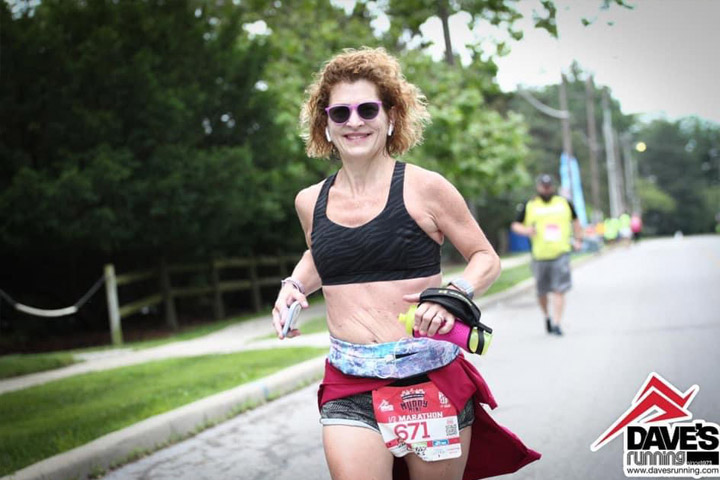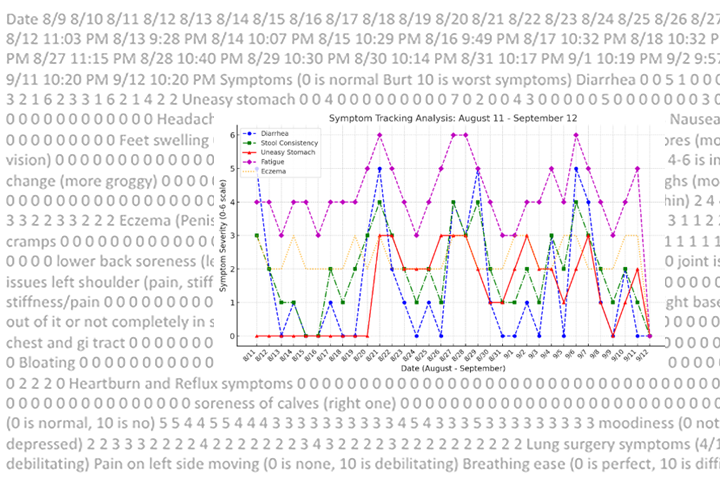Changing My Life for the Better

- Diverticulitis attack was the pathway to pancreatic neuroendocrine tumor diagnosis
- Whipple surgery
- Back to half-marathons after recovery
It is crazy how we find our way to diagnosis.
It was January 2020, and I noticed a familiar sharp pain in my lower left intestinal area—diverticulitis. I had had one previous attack in August 2019. This time my family doctor was out, so I met with his partner—she felt a scan was needed, but with the level of discomfort I had she preferred I get on meds and go home to rest.
Roughly four days later, I still had diverticulitis pain, which is uncommon. Usually the pain resolves in a few hours. I made a call to my doctor’s office, and they advised me to go to the ER to obtain a CT scan.
The attending physician announced, “Diverticulitis,” and I had a few moments of relief. I literally said to myself, “At least it is not my pancreas!” His next words put up a red flag in my head: “We may keep you overnight.” I inquired why, and his thought was to observe and make sure I would not have an obstruction. My next question changed my life in an instant. I simply asked, “How bad can this be?” The doctor went on to read the subsequent findings and asked the following:
- Have you ever had any pain? Pain that would end in a visit to the ER?
- Have you ever had pancreatitis?
- Have you ever been told you have a finding on your pancreas?
The answers were all NO. He pushed and asked if I was certain. Again, I said, “No.”
I never reported to my doctor or the ER with digestive issues, even though I had them over the years. But the ER doctor and MRI technician thought I should have had severe pain due to the misdiagnosed pancreatitis, but I never had any pain.
He said that I had developed a large calcification on the head of my pancreas, and the remaining pancreas was significantly atrophied. Chronic pancreatitis was the diagnosis, and I was advised to contact my physician for a follow-up. He stated that it wasn’t urgent, just something to do in the future.
The Future Is Now
The next day, I made an appointment with my doctor of 16 years, a doctor that knew my lifestyle. I was an avid runner (marathoner and half-marathoner), I did yoga, and I ate a healthy diet. Yes, I enjoyed craft beer, but I was not excessive, definitely not overindulgent. I was immediately shamed for my lifestyle, firmly told I had to stop drinking, told that he was disappointed in me. He asked, “What the hell happened to you? You used to take really good care of yourself—you were a runner and did yoga! You have done serious damage to your body, and this is pretty serious.” I was stunned. How did I do this? I was always health-conscious. How, just how? I walked out feeling pretty bad, trying to put it all together.
He scheduled an MRI the very next day. The tech doing the test asked repeatedly if I was in any pain, so I knew that she had seen the damage to my pancreas. I called my doctor’s office and was told the original diagnosis stood. At that time, I asked for a dietitian and gastroenterologist. I was told that I didn’t need a dietitian and was provided the number of a gastroenterologist. I did a review search of the referral and found him to be questionable, with a 1-star rating.
Time to Take Control
I recall sitting in my office thinking, “I deserve more. My pancreas deserves a 5-star-rated doctor. I called University of Michigan just to ask a few questions. They were able to pull up all my scans, and I was seen within a week.
At U of M, I was told that my pancreas problem wasn’t due to lifestyle, and that there were many factors involved. I met with a dietitian that day, and I had blood drawn for countless labs tests (tumor markers, typical labs, and many labs that required Google to help me understand fully what they were checking for). They told me they would reread my CT and MRI to confirm, but they were great quality and there was no need to rescan.
Immediately the lab results began rolling in, and everything was normal, which lessened any worry I had. The plan was to make dietary changes—no fats, zero alcohol, and very little processed food. Simple.
After a few weeks, the results came through on the reread of the original scan. The original scan stated there was no lesion, no tumor. I began reading the new report and the words “lesion, 3.2 cm tumor” were mentioned. My world stopped. Wind knocked out, couldn’t breathe, shaking and scared.
The scan results also surprised my medical team—I now had a team, not just one doctor. It wasn’t anything they suspected, but within the mass of calcification was a tumor. A tumor that was considered potentially malignant.
The Next Steps
The next steps were a biopsy and a consult with a pancreatic surgeon. Mind-boggling. The biopsy was somewhat inconclusive, but my doctor felt the behavior of this tumor was neuroendocrine in nature. I had a rare form of pancreatic cancer—a pancreatic neuroendocrine tumor (PNET). The good news was the slow growth. My team felt I had this cancer for many years due to the damage to the pancreas and the calcification.
In retrospect, the sporadic episodes of digestive issues started making sense. Those with pancreatic issues will understand the issues I reference. I had my colonoscopy at 50 and thought I was in the clear, never thinking these bouts were due to cancer. Starting in 2019, I began to notice severe fatigue (I am very active); and some evenings I was so fatigued I couldn’t lift my arms off the bed. I had also noticed a severe sensitivity to my skin on my arms. When I casually mentioned these things to my original doctor during a visit, he dismissed my concerns.
Since I was diagnosed at the height of the pandemic, my first meeting with my pancreatic surgeon was via Zoom in April. I was provided with two options: 1. Watch and wait—monitor the behavior of the tumor in six-month intervals or 2. Have a Whipple procedure. The team could only provide facts, not push me one way or the other. The Tumor Board also reviewed the action plan, and they agreed with either option.
In doing research, I knew the Whipple would be life-altering. But I also knew I would not mentally handle having a tumor residing in my pancreas, since I had many friends and acquaintances pass from this disease. I also knew I was in pretty good shape physically. I had no way of looking into the future knowing if I would be a candidate later on, so I decided on the Whipple.
The Whipple and Beyond
On May 22, 2020, I was given the gift of meeting my surgeon for the first time as I was prepped for surgery. The surgery was long—seven and a half to eight hours–and it was a success. They removed a well-differentiated neuroendocrine tumor with negative margins. I had two positive lymph nodes, with lymphovascular and perineural invasion.
I was up walking the next day, waiting for the bottom to fall out. So many people prepared me for the worst, but I really didn’t feel that bad, even though I expected to. By the second or third day after surgery, I was up to roughly 4,000 steps! I kept going!
My medical team watched me silently during their visits—one even remarked how well I climbed into bed. The next visit was from my surgeon. As we walked and talked, he told me he had expected complications (due to the atrophied pancreas), and he was surprised at how well I was doing. He literally said, “Robin, you just had a Whipple! This is not something we see. It was a Whipple! Do you understand?”
I was released on Day Five and began walking daily. By week three, I was able to do three-mile walks. I tried to run one day but was only able to go two steps. But every week I would attempt to run. One day, I found I could run a little if I held my sides. So, I ran-walked holding my sides and then one day I was able to let go. One more step to freedom. At my six-month appointment, I asked my surgeon if I could train for a half-marathon. He chuckled and said, “I can’t wait to hear all about it on the next visit!”
On the Run
On May 22, 2021, around the same time I was undergoing major surgery a year prior, I was lined up at a starting line for a half-marathon. My goal was to finish, since I had done several—14, I think—before my surgery. At this race, I had my fourth best time. Monumental! Achievable, and a sign that I would not be defeated.
I am almost two years out, all my digestive issues have disappeared, skin sensitivity and the fatigue have disappeared. I have some issues with stamina, but it is hard to determine if it is the cancer, the Whipple, or an effect of Covid, which I contracted in January this year. I also noticed I have not had a cold, bronchitis, issues of reactive air disease, or asthma—all issues I had struggled with years prior and which could have been related to hormonal release from the tumors.
I will be candid and honest. For me, the Whipple was a doable and life-changing surgery. My quality of life is better now than prior to the Whipple. Determination, gratitude, mindset, and faith all make it possible. And you should know that if a doctor offers you a Whipple, know it isn’t done lightly.





